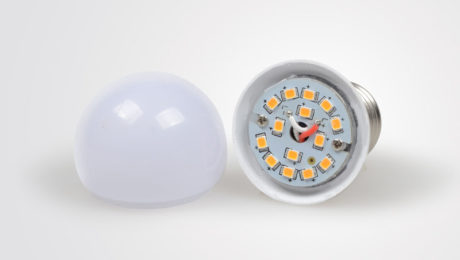Factors Affecting The Life Expectancy of LED Lights-SPOTLIGHTING
We all know that the life expectancy of LED lights is between 1-5 years.Why do the bulbs that look the same shape have different lifespans?how to select the best led light bulbs for home?
1.LED Chip
The LED chip is the core component of the LED light source, and its lifetime largely determines the life of the LED lamp. There are three factors that affect the life of LED chips: the lattice defects of the chip, the packaging process and the quality of the phosphor.it is important to choose the best led light bulbs for home.
First, the material constituting the LED chip is a crystal, an ideal crystal. If the lattice is not arranged so well, and some places are missing, this defect will affect the life of the LED chip. In addition, if the impurities doped by the LED chip are not the impurities we need, it will also affect the life of the LED light source.
Whether the LED package is reasonable or not is also an important factor affecting the life of the chip. Most companies have more imitation products of product process packaging.But the process structure and process quality are poor, which seriously affects the life of LEDs.
In addition, the performance of the LED chip has a certain degree of dispersion, before the package should be classified according to the LED chip area, light efficiency and other indicators. If the chip is not binned before packaging, the finished product yield after packaging must be uneven. That is to say, the LED package and the bin before the package are also important factors affecting the life of the LED.
The quality of the phosphor also affects the lifetime of the LED chip. At present, there are various methods for producing white light by LED chips, and two of them are white light by phosphor. One method is to coat a YAG (Yttrium Aluminum Garnet) phosphor on an LED blue chip. Since the photon with short wavelength is larger than the photon energy with longer wavelength, the blue light emitted by the chip (short wavelength) excites the phosphor to produce yellow-green light (wavelength longer than blue light) from 500 nm to 560 nm, and white light is synthesized by blue light and yellow-green light.The cost of obtaining white light by this method is relatively low, but the uniformity of the phosphor is difficult to control, and the light effect and color temperature will change correspondingly after the chip is used for a period of time.
Another method is to let the LED chip emit ultraviolet light, and the ultraviolet light then excites RGB (red&green&blue).Phosphors to generate red, green, and blue three primary colors, and the three primary colors are mixed into white light. Because the photon energy of ultraviolet light is large, resulting in the epoxy resin of the encapsulating material is easily aged, which also affects the life of the LED chip.
- The design of Heat dissipation
A reasonable design of the heat dissipation is to meet other metrics of the LED Lighting.For example, the original LED products of companies such as Cree are used on different lights,the LED life difference could be a mutiple of one to ten. Because of the contact between the light source and the heat dissipation channel does not have good heat dissipation, some products cause light decay of more than 50% after lighting for 1-3 months.Some products use a small power tube of about 0.07 W, because there is no reasonable heat dissipation mechanism, resulting in very fast light decay. These products are low in technical content, low in cost and short in life.
- Driver power
The drive power plays a key role in the life of the LED Lights. This is a problem that cannot be ignored, and it may also be the bottleneck of current LED lamps. When inspecting damaged fixtures, it is often found that the LED chip is not damaged, but the drive power supply has damaged.
- Using Environment
The using environment of LED lamps also affects the length of their life to some extent. Differences in ambient temperature, sand environment and precipitation conditions can cause differences in the service life of LED lamps.
- Published in Blog

